Dentsu Inc.'s cross-functional internal organization 'Femtech and BEYOND.' views femtech as relevant not only to women but to society as a whole, driving various initiatives.
This series explores the evolving trends in femtech and its significance through the organization's initiatives, exchanging perspectives with diverse companies and media outlets.
Part 2 focuses on the "Fe: Project," where the Femtech and BEYOND. team teamed up with Fujita Metal, a manufacturer and seller of iron frying pans, to develop products addressing women's iron deficiency issues.
Both products born from this project—the first release, "The Frying Pan for Days You're Not Feeling Well," and the second release, "The Miso Soup Bread to Energize Your Day"—were promoted by Fujita Metal using crowdfunding to recruit buyers. Both campaigns significantly exceeded their funding goals, generating a huge response.
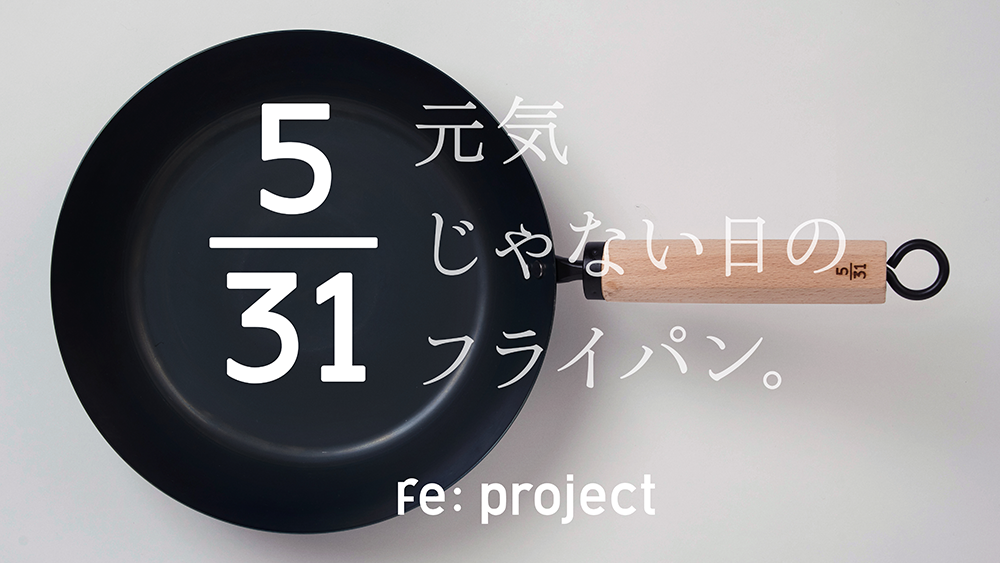
The first product, "The Frying Pan for Days You're Not Feeling Well." The name symbolically represents women's life cycles and days when they're not feeling well, using the date 5/31 (31/5).
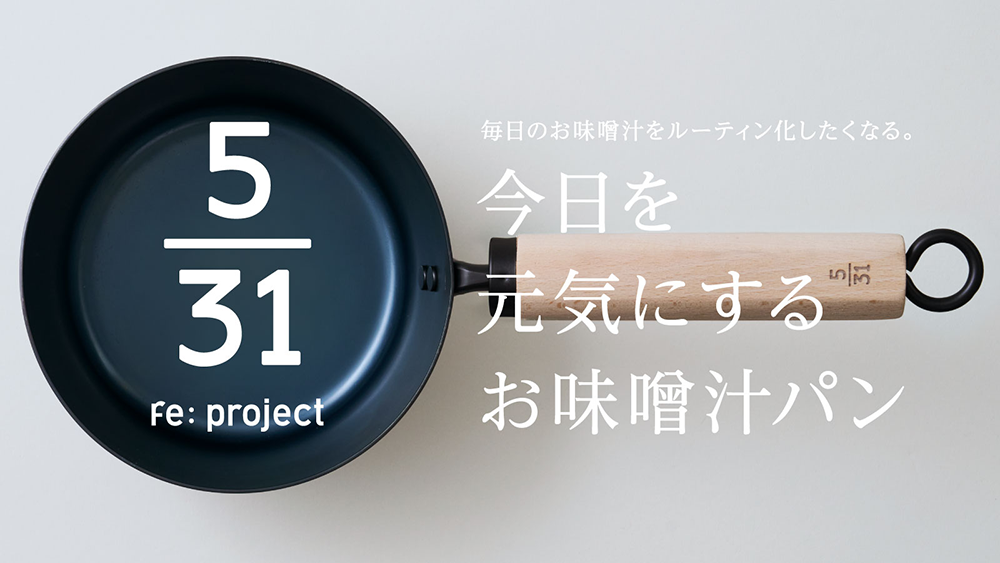
The second product, "Miso Soup Bread to Energize Your Day"
Why focus on women's iron deficiency, and what led to product development? Mr. Seiichiro Fujita, President of Fujita Metal Co., Ltd., who oversaw product development, along with Mr. Shinya Aoyama, Producer from the "Femtech and BEYOND." team at Dentsu Inc. Kansai, and Art Director Mr. Junya Furukawa, reflect on the origin of the idea and the background of the initiative.
Many modern women suffer from chronic iron deficiency!?
Aoyama: The Fe: Project actually started when a member casually mentioned women's iron deficiency during a chat conversation within the Femtech and BEYOND. team.
Iron is an essential nutrient for maintaining health, but women who menstruate are said to be more prone to chronic iron deficiency compared to men. While iron deficiency in women is a serious problem not only in Japan but globally, other countries seem to be taking various measures at the national level, such as adding iron to foods like flour. In contrast, awareness of the iron deficiency problem is low in Japan, and few countermeasures are currently being taken.
Furukawa: Especially compared to women in the past, modern women have significantly different life plans, such as fewer or no childbirths, leading to an increase in the total number of menstrual cycles over their lifetime. Considering this, government announcements also recommend actively consuming iron during menstruation. However, there's little mention of how to actually do this. People know it's necessary, but they don't know how to consume it. That's where our discussions began – could we create something to solve this problem?
Our inspiration came from the traditional Japanese iron kettle. Boiling water in an iron kettle releases iron, so drinking tea brewed with this water provides iron intake. There's evidence supporting this. This led us to reconsider: wouldn't using iron skillets and pots for everyday cooking be an excellent, convenient way to incorporate iron into daily life?
Aoyama: However, iron pots and pans have a reputation for being heavy and difficult to handle, presenting a significant barrier for everyday use. So, we thought, wouldn't it be great if there were iron frying pans and pots that were easy to maintain and use? We searched for a manufacturer capable of creating such products, and the name that came up was Fujita Metal in Yao City, Osaka.
Fujita: Honestly, I was surprised when we first received the proposal. I hadn't even heard the term "femtech" before then.
Aoyama: Exactly. Back in 2021 when we first approached you, femtech might have been featured in women's magazines, but it definitely wasn't mainstream yet. So suddenly being told we wanted to make pans and pots addressing women's health issues through a femtech lens must have been a shock (laughs). I remember your surprised reaction vividly.
Fujita: I was genuinely shocked that such an angle existed. Traditionally, the selling points for iron skillets and pots focused on durability. Regarding cooking, they were mostly promoted with phrases like "can handle high heat for searing or stir-frying," enabling crisp stir-fried vegetables or fluffy fried rice. So, as craftsmen, we found this idea fascinating—it was something we never would have thought of ourselves.
We also saw it as a chance to introduce the appeal of iron pans and pots to a different customer base than before. We decided, "Let's move forward immediately," and began development.
Through repeated prototyping, we achieved a cast iron skillet that's surprisingly lightweight!
Aoyama: We started with creating the first iron frying pan. Furukawa drew a sketch close to the final design early on, which really helped clarify the goal for the whole project team: "This is what we want to make."
Furukawa: When it comes to femtech products, colors and designs often lean towards what's perceived as feminine. While we definitely wanted women to use this, we also believed cooking isn't just for women. We wanted husbands and partners to cook too. So, we aimed for a product that anyone would find appealing, avoiding designs that felt strictly for women or men.
That's why, while Mr. Fujita showed us various prototypes, we focused not only on ease of use but also on details like the handle material and design, creating it through trial and error.
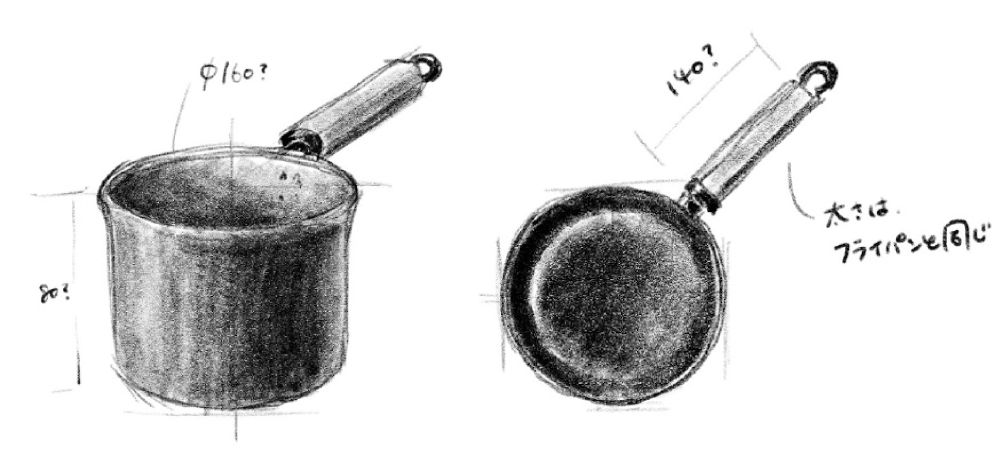
Fujita: That's right. Regarding the frying pan development, our first focus was weight. Traditional iron pans had the drawback of being heavy, so we thinned the iron plate to the absolute limit. However, making it too thin reduces durability and can cause deformation when heated. We conducted repeated tests, searching for the thinnest possible edge that still guaranteed durability. The result was settling on 1mm as the optimal thickness. Despite being iron, we managed to reduce the weight to 694g, comparable to a typical aluminum frying pan. To address the inherent maintenance challenges of iron, we applied our proprietary processing technology, achieving both rust resistance and non-stick properties.
As Mr. Furukawa mentioned, the handle is another point of focus. By shaping it hexagonally, we achieved a comfortable fit in the hand and enhanced grip.
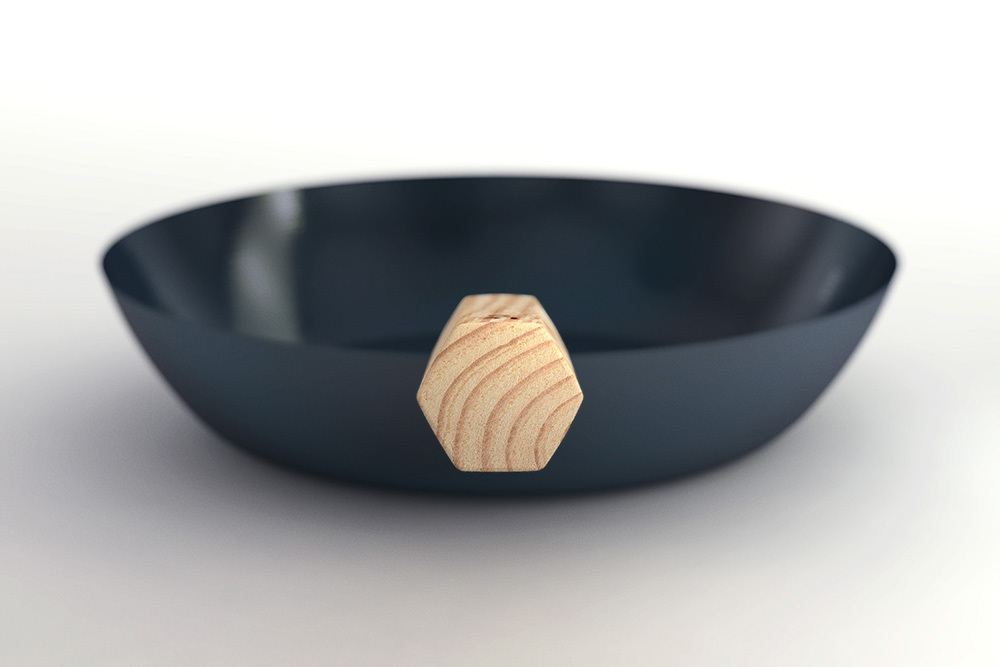
Aoyama: It was also interesting how the copy "A frying pan for days when you're not feeling well" emerged as a phrase embodying our passion for product development. This came from a team member and became the product's name.
Furukawa: Exactly. It clearly communicates the concept: even when you're tired and not feeling your best, you can easily use this cast iron skillet without worrying about its weight or maintenance, and it even helps replenish iron.
By clearly stating the iron intake amount with evidence, it generated a huge response!
Furukawa: For the second product, we'd already decided we wanted to make a pot after the frying pan. We wanted the pot to be used daily, just like the frying pan. When we discussed within the team, "What do Japanese people eat every day?" we arrived at miso soup. "It really is miso soup for Japanese people," we agreed. That's how the development of the miso soup pan began.
Fujita: For the miso soup pan, we also debated details like the capacity and whether to include a pouring spout.
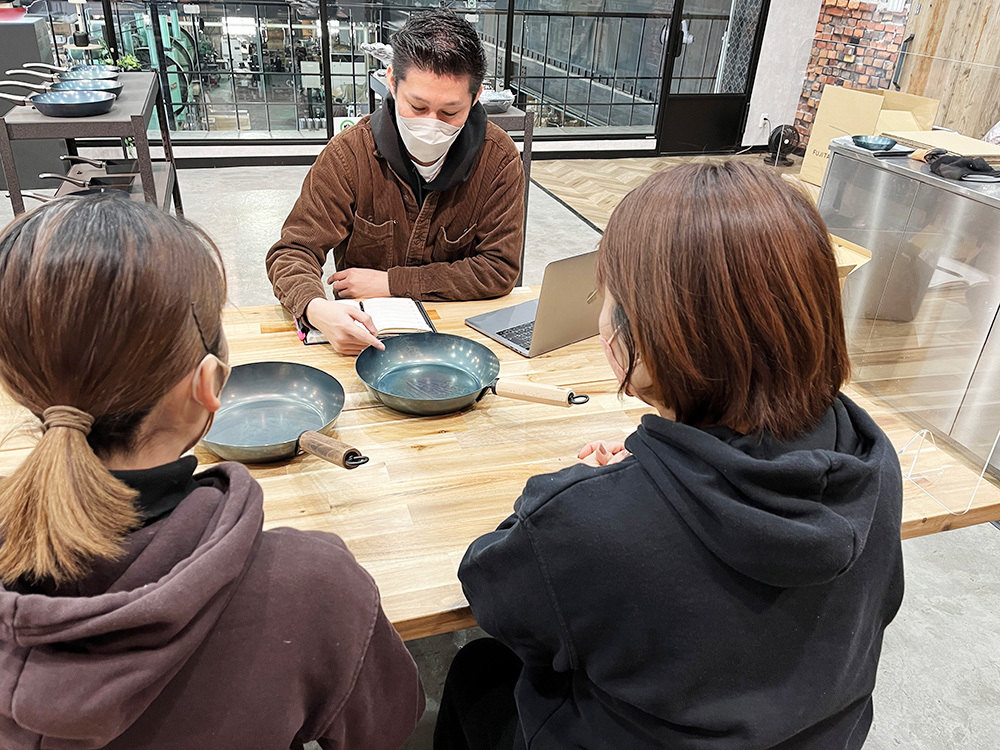
Furukawa: That's right. Considering family health and the need for cooking, we decided it needed a capacity to make enough for four people. We also debated whether a lid was necessary. We pursued ease of use by actually testing it ourselves.
Fujita: And for the second iteration of the Miso Soup Pot, securing solid evidence for iron intake was really significant. When we compared iron levels after dissolving miso in hot water and heating it in a standard glass pot versus the Miso Soup Pot, the glass pot yielded 1.0mg, while the Miso Soup Pot delivered a whopping 40mg. That means you get 39mg more iron with the Miso Soup Pot. I was genuinely surprised by that result.
Aoyama: Having a specialized research institute analyze it and scientifically prove the iron intake benefit became a major strength for our promotion.
Both the first-generation frying pan and the second-generation miso soup pan were offered for purchase via Makuake, a crowdfunding site, ahead of general retail. However, for the miso soup pan, presenting the evidence during promotion led to a significant difference in purchase results and public response.
Fujita: While the first frying pan campaign was successful, reaching its funding goal, the second miso soup bread campaign had a target of ¥150,000 but actually raised ¥7,340,120—a 4893% achievement rate. Though the second campaign ran longer, making direct comparisons tricky, the number of backers also grew significantly: 104 for the frying pan vs. 1138 for the miso soup bread.
The reason for such a large difference is, I believe it's largely related to whether or not there is evidence.
Supporting women's daily lives with products that fit seamlessly into their routines
Aoyama: This time, we developed and sold products from the new perspective of femtech. How did actual purchasers react?
Fujita: When we first heard about this idea, we were surprised by its novelty but also a bit skeptical (laughs). However, the comments from backers on Makuake were very positive, with many saying things like, "I have iron deficiency anemia but couldn't tolerate iron supplements, so I'm thrilled about this product," and "It's wonderful to get iron from my daily miso soup."
Also, at the Femtech Japan exhibition in June 2023, where we showcased the frying pan and miso soup bread, we received positive feedback from female customers, with many purchasing on the spot. That really drove home how many women struggle with iron deficiency and anemia.
Looking at actual purchaser data (for the second-generation miso soup bread), women in their 40s and 50s accounted for over half of buyers.
Aoyama: This strong response might also be fueled by the term "femtech" gradually gaining traction in society.
Fujita: Both the first and second products received significant attention, and we're now being approached by various retailers. So, we plan to develop new products following the frying pan and miso soup bread, aiming to create a series. We want to further explore the potential of iron products through the femtech approach.
Additionally, our company will participate in trade shows in Paris and Germany in January 2024. We plan to exhibit the Fe: Project frying pan and miso soup pan there too, so we're looking forward to seeing how they're received and the response from international audiences.
Furukawa: I'm very curious about the response overseas, where awareness of iron deficiency issues is higher than in Japan.
For the Fe: Project, while the core concept of creating easy-to-use everyday items remains unchanged, we hope to take on various challenges in developing products that support women's lifestyles, such as items specifically designed for menstruation.













